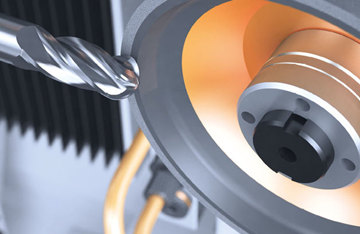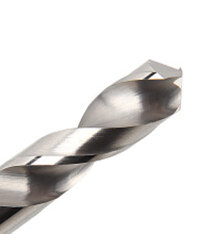Selection of grinding parameters of solid carbide tools with diamond grinding wheels
Type of grinding wheel for grinding carbide
Cemented carbide is tungsten carbide, titanium carbide and other metal carbide as hard phase, with cobalt and other metal as adhesive, made by powder metallurgy method, has a high hardness (up to HRA89-93, Microhardness of 1300-1800N/mm2), low thermal conductivity (16.75-79.55W/m·K), low bending strength (3.0-4.5gpa) and large elastic wear (540-650gpa). It is a hard brittle material at room temperature, showing different grinding requirements from steel and other materials. Used to using green silicon carbide grinding wheel for grinding carbide, but because of the high silicon carbide abrasive hardness is not enough (microhardness n/was 32000-34000), when grinding carbide abrasive wear passivation easily, cause the increase of grinding force, grinding temperature is exorbitant, leads to the formation of a cutting tool surface crack defects, such as silicon carbide grinding wheel threshing too fast at the same time, Grinding wheel shape is not easy to maintain, resulting in tool size instability.


Because diamond has high hardness, sharp cutting edge and high wear resistance, diamond wheel has replaced silicon carbide wheel and become the first choice for grinding hard alloy in recent years. The main characteristic parameters of diamond grinding wheel are as follows :① Particle size, used to represent the average size of diamond abrasive grains, commonly used particle size D64, D46, D35 (FEPA standard). (2) Concentration, refers to the number of carats of diamond contained in the abrasive layer per cubic centimeter, commonly used concentration is C100, indicating that the content of diamond is 4.4ct/cm3. ③ bond, commonly used metal bond (M), resin bond (B), ceramic bond (V). (4) Shape, such as flat grinding wheel, bowl shaped grinding wheel, hypotenuse grinding wheel, etc.. ⑤ External dimensions, for example, a manufacturer’s diamond grinding wheel model :1A1-100T6X5-D64C10B55 means that the grinding wheel shape is flat grinding wheel, diameter 100, thickness 6, abrasive layer thickness 5, diamond particle size D64, concentration C100, resin binder.
In the process of grinding hard alloy, the diamond wheel will gradually wear, the form of abrasive wear, abrasive broken and abrasive off.
Which of the three grinding wheel wear modes, namely abrasive wear, abrasive crushing and abrasive shedding, plays a leading role depends on the bond, grinding wheel hardness, workpiece material, processing conditions and grinding parameters. When other conditions remain unchanged, the greater the linear speed of the grinding wheel, the smaller the grinding depth of each abrasive particle and the smaller the grinding force it is subjected to. Although the total grinding stroke of the abrasive particle increases, the life of the abrasive particle will be significantly increased because of the very high wear resistance of diamond abrasive particle. When the grinding depth increases, the formation of each abrasive particle will increase, and the generated debris will accumulate in the front gap of the abrasive particle, which will erode the binder. At the same time, the force on the abrasive particle will increase, which will increase the possibility of abrasive particle shedding. When the feed rate or workpiece speed increases, the maximum thickness of the undeformed chip cut by the abrasive particle increases, resulting in an increase in the force on the abrasive particle, which may directly “jump” the abrasive particle out of the binder.
Big grinding wheel linear velocity, small grinding depth and the feed speed is helpful to extend the life of the grinding wheel, reduce the self-sharpening performance of grinding wheel, when grinding wheel after passivation need repair renovation sharp operations, such as dressing will remove a lot of grinding grain, it will increase the consumption of grinding wheel, and low feeding speed and grinding depth can reduce the grinding efficiency.






